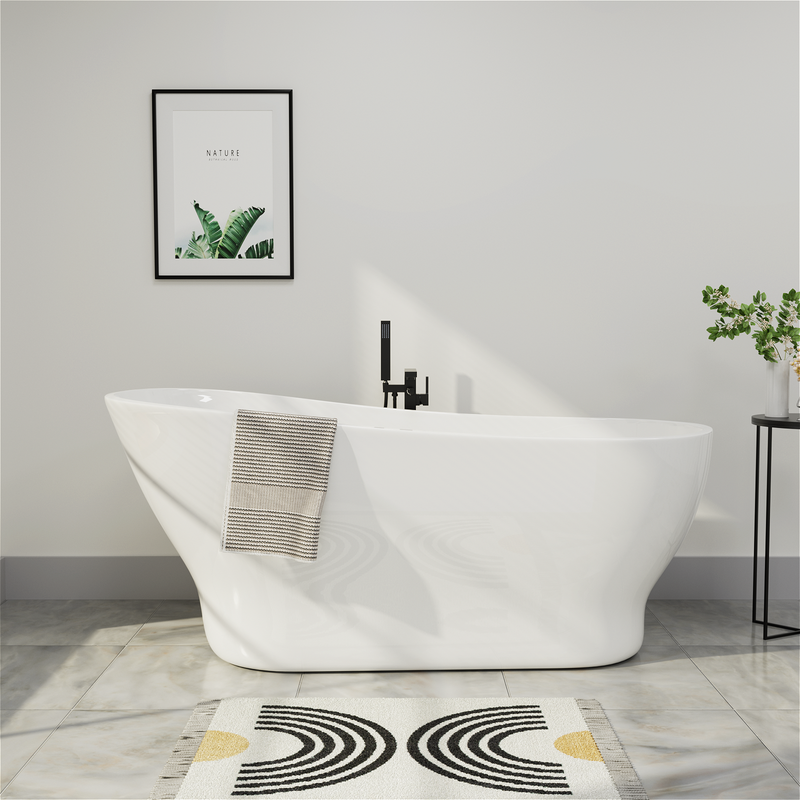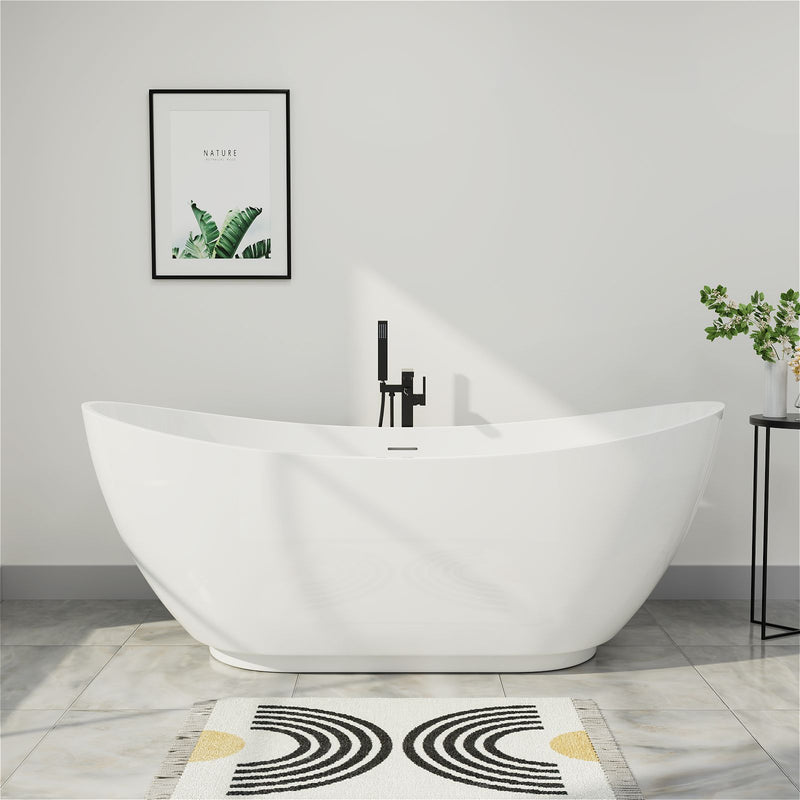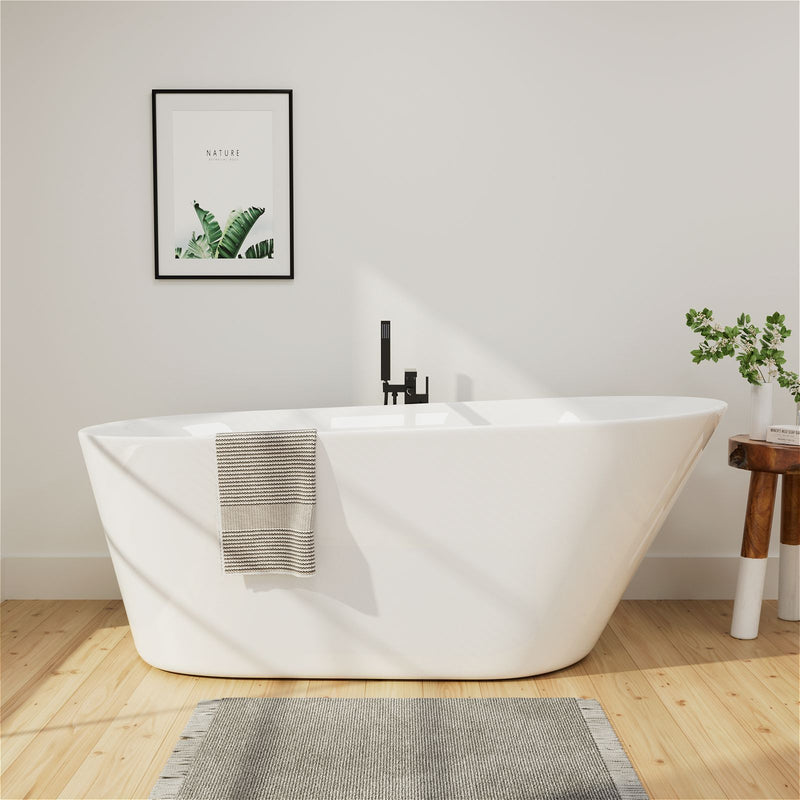In the evolving landscape of bathroom organization and relaxation, the bathtub bamboo caddy has emerged as a favorite for homeowners seeking a blend of practicality and natural elegance. As bathrooms increasingly transform into personal wellness retreats, accessories that enhance both function and ambiance are in high demand. Bamboo caddies answer this call perfectly, offering a sustainable, durable, and aesthetically pleasing solution for keeping bath essentials within reach. Unlike metal or plastic alternatives, bamboo brings warmth and organic texture to the space, aligning with the growing preference for natural materials in home design. This comprehensive guide explores the benefits of bamboo caddies, how to select the right one, and practical tips for installation and care, helping you make an informed decision for your bathroom.
Why Choose a Bamboo Bathtub Caddy?
Natural Material Benefits
Bamboo stands out as a rapidly renewable resource that regenerates quickly, making it an environmentally friendly alternative to traditional woods or plastics. Its inherent sustainability appeals to eco-conscious consumers, as bamboo forests require no pesticides and minimal water to thrive. The material's natural grain variations ensure that each caddy is unique, adding character to bathroom decor. Beyond aesthetics, bamboo possesses natural resistance to moisture, a crucial trait for bathroom environments where humidity levels are high. This resistance helps prevent warping and degradation over time, though proper sealing is still recommended for longevity. Additionally, bamboo's non-porous surface when sealed makes it resistant to bacteria and mold, supporting a healthier bathing environment.
The structural properties of bamboo further enhance its suitability for caddies. It offers a remarkable strength-to-weight ratio, often compared to that of steel, ensuring the caddy remains sturdy enough to hold books, electronic devices, and bath products without bending or breaking. Despite this strength, bamboo is surprisingly lightweight, making it easy to adjust or remove from the tub as needed. Users also appreciate that bamboo feels warmer to the touch than metal or plastic, avoiding the chilly sensation that can detract from relaxation. This combination of sustainability, durability, and user-friendly features positions bamboo caddies as a superior choice for modern bathrooms.
Functional Advantages
Bathtub bamboo caddies excel in merging versatile utility with space-saving design. Their primary function is to maximize convenience by providing a stable platform for essentials within arm's reach during baths. Most models feature dedicated slots for smartphones or tablets, allowing users to enjoy media without risking water damage. The inclusion of built-in holders for wine glasses or mugs caters to those who use bath time to unwind, creating a spa-like experience at home. Additional compartments for books, candles, or bath products help maintain an organized and clutter-free tub edge, contributing to a more serene environment.
The design of these caddies often incorporates adjustable length mechanisms, such as extendable arms or sliding components, to fit a wide range of standard tub widths. This adaptability ensures a secure fit without slipping, even when loaded with items. Some advanced designs include foldable or detachable sections for compact storage, addressing the needs of smaller bathrooms where permanent fixtures might feel obstructive. By consolidating multiple items in one easily accessible location, bamboo caddies reduce the need to stretch or step out of the tub, enhancing both safety and relaxation. Their multi-functional nature aligns with the trend of bathrooms serving as personalized wellness spaces, where every element contributes to comfort and convenience.
Key Features to Look for in a Bamboo Caddy
Material Quality and Construction
When selecting a bamboo bathtub caddy, the quality of materials and construction directly impacts its durability and performance. Look for caddies made from solid bamboo or high-density strands, as these resist cracking and splintering better than cheaper composites. The processing method matters—thermally treated bamboo undergoes heating to reduce moisture content, which enhances stability and resistance to humidity-related expansion. The finish should be smooth and evenly applied, with special attention to edges and corners to prevent splinters.
The construction of the caddy should reflect thoughtful engineering. Reinforced joints,
such as dovetail or mortise-and-tenon connections, significantly improve load-bearing capacity compared to simple glued or screwed attachments. Check for uniform sealing on all surfaces, including the underside, to protect against water absorption. High-quality caddies often feature water-resistant coatings like natural oils or food-grade varnishes that preserve the wood's appearance without compromising its eco-friendly profile.
Additionally, inspect accessory features like silicone pads on the bottom—these should be firmly adhered and thick enough to prevent sliding. A well-constructed bamboo caddy maintains its integrity over years of use, even in humid bathroom conditions.
Design and Practical Features
The design of a bamboo caddy should balance aesthetics with everyday functionality. Ergonomic layouts that position frequently used items like phones or books within easy reach improve the bathing experience. For example, a raised lip around tablet slots prevents devices from sliding into the water, while slanted wine glass holders secure stems at a natural angle. Some designs incorporate removable trays or dividers that allow customization based on what you need to store.
Practical features like drainage channels or cutouts help manage accidental spills by allowing water to flow off the caddy instead of pooling. These are particularly useful for bathers who use lotions or oils that might leak. If you plan to use the caddy for reading, consider models with fold-out book holders that keep pages dry and hands-free. For added versatility, some caddies offer reversible designs with different configurations on each side, such as a flat surface for skincare on one end and a grooved area for utilities on the other.
Size and adjustability are critical. Measure your tub's width before purchasing to ensure the caddy's extended range accommodates it. Adjustable caddies should have secure locking mechanisms that don't loosen over time. Compact designs with space-saving profiles work well in shared bathrooms where the caddy might need frequent removal. By prioritizing these features, you can find a caddy that seamlessly integrates into your routine while enhancing the organization and enjoyment of your bath.
Installation, Maintenance, and Care
Proper Installation and Usage
Installing a bamboo bathtub caddy is typically straightforward, but following best practices ensures safety and longevity. Start by cleaning the tub edge where the caddy will rest to remove any residues that could affect grip. If your caddy includes adjustable arms, extend them gradually until they press snugly against the tub walls without requiring excessive force. Over-tightening can stress the bamboo and lead to cracks over time. Most caddies rely on silicone or rubber pads for grip, so check that these are clean and properly positioned to prevent scratches on the tub surface.
For caddies with additional features like suction cups or clamps, ensure they are firmly attached before loading items. When placing belongings on the caddy, distribute weight evenly to avoid tipping—heavier items like books should be centered, while lighter accessories can go toward the ends. If using electronics near water, consider a waterproof case as an extra precaution, even if the caddy has a dedicated dry zone. To prevent overloading, refer to the manufacturer's weight recommendations, which typically range from 10 to 20 pounds for most models.
Regularly inspect the caddy for signs of wear, such as loosened joints or faded sealing. If the caddy remains in a humid bathroom between uses, occasionally reposition it to allow even air circulation. For caddies with moving parts, a periodic check of adjustment mechanisms ensures they remain easy to use. Proper installation and mindful usage not only protect the caddy but also contribute to a safer and more relaxing bathing experience.
Cleaning and Maintenance Tips
Maintaining a bamboo caddy is simple with consistent care. Daily wiping using a soft, damp cloth removes soap residue and moisture. For deeper cleaning, a mild solution of vinegar and water (1:2 ratio) can disinfect without damaging the bamboo, but avoid harsh chemicals like bleach or ammonia, which can break down the protective sealant. After cleaning, always dry the caddy thoroughly with a towel to prevent water from seeping into the wood.
To preserve the bamboo's luster, apply a natural wood conditioner every few months. Food-grade mineral oil or beeswax-based products work well to replenish moisture and maintain water resistance. When not in use, store the caddy in a dry, well-ventilated area away from direct sunlight, which could cause fading or warping. If minor scratches appear, lightly sand the area with fine-grit sandpaper and reapply the sealant.
Addressing stains promptly prevents permanent marks. For oil-based stains, a paste of baking soda and water can be gently scrubbed onto the area. For water rings, a quick wipe with olive oil often restores the surface. With regular upkeep, a quality bamboo caddy can last for years, continuing to add functionality and style to your bathroom.
Environmental Impact and Sustainability
Eco-Friendly Credentials of Bamboo
Bamboo's sustainability stems from its rapid growth and minimal environmental footprint. Unlike traditional hardwoods that take decades to mature, bamboo reaches harvestable maturity in 3-5 years, making it a highly renewable material. Its root system remains intact during harvesting, preventing soil erosion and allowing regrowth without replanting. Bamboo also sequesters carbon efficiently, absorbing more carbon dioxide per hectare than many tree species, which helps mitigate climate impact.
The production of bamboo products generally consumes less energy compared to metals or plastics. However, the sustainability of a bamboo caddy can vary based on manufacturing practices. Look for products certified by organizations like the Forest Stewardship Council (FSC), which ensures responsible sourcing. Water-based sealants and adhesives further reduce the environmental impact by minimizing volatile organic compound (VOC) emissions.
By choosing a bamboo caddy, you support a market for sustainable goods and reduce reliance on non-renewable materials. This aligns with the growing consumer preference for eco-conscious home products that offer both practicality and environmental benefits.
FAQs
Will bamboo warp or crack in bathroom humidity?
High-quality bamboo caddies are sealed to resist moisture. However, prolonged exposure to water can cause damage over time. Wiping dry after use and periodic resealing can help prevent issues like warping.
Are bamboo caddies adjustable to different tub sizes?
Yes, most designs feature extendable arms or sliding components to fit standard tub widths between 50 and 70 inches. Always measure your tub before purchasing.
Can I use shampoos or soaps directly on the caddy?
It's safer to place leak-prone items in dedicated containers or holders. Spills should be wiped immediately to protect the bamboo's finish.
How do I restore a faded or scratched bamboo caddy?
Light sanding followed by application of a natural wood oil or sealant can refresh the surface. Avoid abrasive cleaners that might remove the protective coating.
Is bamboo more sanitary than plastic or metal?
Bamboo's natural antimicrobial properties inhibit bacteria growth when kept clean and dry. Its non-porous sealed surface is also easy to wipe down.
Can bamboo caddies be used in jetted tubs?
Yes, most adjustable bamboo caddies work with jetted tubs as long as the rim is wide enough to provide stable support (typically at least 2 inches). Ensure the caddy doesn't interfere with jet controls or overflow mechanisms.
Are bamboo bathtub caddies waterproof?
Bamboo is water-resistant but not completely waterproof. With proper sealing and maintenance, it withstands bathroom humidity and occasional water exposure well. Wiping spills promptly and thorough drying after use helps maintain the material's integrity.
How do I prevent my bamboo caddy from sliding?
Quality caddies include non-slip padding on contact points. If yours lacks these or they've worn out, self-adhesive silicone pads or rubber dots can be applied to the underside where it contacts the tub.
Can I leave my bamboo caddy on the tub permanently?
While technically possible, it's better to store your caddy in a dry location between uses. Continuous exposure to moisture can eventually compromise the material and any metal components.
Do bamboo caddies work with freestanding tubs?
Most adjustable caddies work with freestanding tubs that have flat or slightly rolled edges. Clawfoot tubs with highly curved edges may require specially designed caddies with contoured contact points.
How do I remove water stains from my bamboo caddy?
A paste of baking soda and water gently applied with a soft cloth can help lift water stains. For persistent marks, very fine sandpaper (220+ grit) followed by application of bamboo oil can restore the surface.
Conclusion
A bathtub bamboo caddy combines practicality, sustainability, and aesthetic appeal to enhance your bathing experience. Its natural resistance to moisture and durability make it ideal for humid environments, while features like adjustable design and dedicated storage promote organization and relaxation. By selecting a well-constructed caddy and maintaining it with proper care, you can enjoy a functional bathroom accessory that aligns with eco-friendly values. As bathrooms continue to evolve into personal wellness spaces, integrating a bamboo caddy offers a simple yet impactful way to create a clutter-free, spa-like retreat at home.





